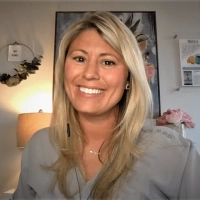28 Lessons Learned from Marketing Failures
Navigating the complex terrain of marketing requires more than just a creative spark; it demands expertise and a strategic mindset. This article delves into hard-earned lessons from the trenches, as seasoned marketing professionals share their candid insights on what truly works—and what doesn't—in the realm of marketing. Armed with these expert perspectives, readers can steer clear of common pitfalls and hone their approach to meet the ever-evolving demands of the market.
- Prioritize Client Needs and Research
- Focus on Specific Audience Messaging
- Center Campaigns on Customer Perspective
- Emphasize Audience Research and Feedback
- Align Marketing with Product Needs
- Validate Product Demand Before Launch
- Tailor Messaging to Audience Needs
- Integrate Emotional Understanding in Campaigns
- Clarity Over Broad Appeal
- Test New Platforms Before Full Investment
- Listen to Audience Needs
- Consider Search Intent in SEO
- Align Campaigns with Audience Expectations
- Understand Customers Before Launching Initiatives
- Validate Assumptions with Data
- Consider Cultural Nuances in Campaigns
- Ensure Continuous Alignment with Stakeholders
- Focus on Product-Market Fit
- Understand Audience Before Campaign Launch
- Be a Kind Leader
- Listen to Audience Before Assuming
- Segment Audience for Effective Campaigns
- Focus on Customer-Centric Marketing
- Trust Data Over Personal Bias
- Deeply Understand User Psychology
- Maintain Consistent Branding
- Adapt to New Marketing Strategies
- Focus on Audience Needs
Prioritize Client Needs and Research
As a CMO, one of the most important things I've ever learned was from a failed marketing effort that occurred because we failed to fully grasp our target demographic. I oversaw a creative and ambitious campaign early in my career, but we were too preoccupied with coming up with a daring concept and a spectacular rollout to check if the material actually spoke to the goals and requirements of our target audience. Although it was difficult to accept, the campaign's poor performance was also one of the most enlightening moments of my professional life.
My attitude to marketing leadership has been totally transformed by that setback. It taught me to constantly prioritize the needs of the client, understanding their motives, behaviors, and pain points before coming up with a creative idea. I now stress that the cornerstone of each campaign should be research and testing. To make sure our messaging is effective before we scale up, my team and I place a high priority on getting feedback, conducting pilots, and iterating based on real-world data.
This lesson also changed how I lead. I encourage my team to be bold and innovative, but I also stress the importance of strategy and discipline in execution. Creativity is powerful, but when combined with data and insights, it becomes unstoppable. That balance is something I carry into every decision, and it's helped us deliver campaigns that not only stand out but truly connect with our audience.
Focus on Specific Audience Messaging
The Power of Focused Messaging: A CMO's Lesson in Marketing Authenticity
The most valuable marketing lesson I learned came from what initially seemed like a perfect campaign. We had all the ingredients for success: comprehensive data, stunning creative assets, and a substantial budget. But I made one critical mistake that turned this promising campaign into a powerful learning moment: trying to make our message resonate with every possible audience segment.
On paper, our strategy looked bulletproof. We had identified multiple market segments, crafted messages that could appeal to each one, and designed a campaign flexible enough to speak to everyone. The problem? In attempting to please everyone, we created a message so diluted it ultimately connected with no one.
Our metrics reflected this reality. Despite high visibility and reach, engagement remained low. Conversion rates fell below expectations. The campaign that should have been a home run became a stark reminder that broad appeal often means shallow impact.
This failure taught me something invaluable: the power of focus and the courage to be specific. I realized that effective marketing isn't about reaching everyone-it's about deeply resonating with the right audience.
This lesson fundamentally transformed how I lead marketing teams:
1. We now embrace specificity instead of trying to craft messages that appeal to everyone.
2. We invest more time in deeply understanding our core audience rather than trying to expand to every possible market segment.
3. When team members worry about excluding potential customers, I share this story to help them understand that specific, focused messaging leads to stronger results.
Perhaps the most interesting revelation was that when we started being more focused and specific in our messaging, our overall reach actually grew. It turns out that authenticity and clarity attract people, even those outside your target audience.
This experience changed my approach to marketing leadership. Sometimes the bravest thing a leader can do is say "no" to opportunities that don't align with your core focus. In today's crowded marketing landscape, our role isn't to cast the widest possible net-it's to create meaningful connections with the audiences who truly matter to our brand.
What marketing failures have shaped your leadership approach? Sometimes our most valuable lessons come from the campaigns that didn't go as planned.

Center Campaigns on Customer Perspective
One memorable failure came during the launch of a new appraisal service. We assumed our audience understood the nuances of the offering because we did. The campaign focused on technical details rather than addressing the real-world problems the service could solve. While we expected high engagement, the response was slow. Feedback revealed that our messaging felt disconnected from the day-to-day challenges of our clients.
This experience reinforced the importance of putting the customer’s perspective at the center of every campaign. Since then, I have prioritized testing concepts with small focus groups before scaling a campaign. We now craft messaging with input from real clients, ensuring it resonates with their pain points and goals. Failures like these are humbling, but they push me to become a better listener and a more thoughtful leader.

Emphasize Audience Research and Feedback
One valuable lesson I learned from a marketing failure was the importance of thorough audience research. Early in my career, I led a campaign that underperformed because we assumed we understood our audience's priorities without validating our assumptions. We focused heavily on promoting discounts, only to discover that our target customers valued convenience and security more than price. This experience shaped my approach to leadership by emphasizing the need to listen to data and feedback before acting. Now, I ensure that every campaign is rooted in research and involves collaboration with cross-functional teams to align messaging with customer needs. It also taught me to foster a culture where failures are viewed as learning opportunities, encouraging the team to take calculated risks and innovate without fear of blame. This mindset has been instrumental in driving smarter, more customer-focused marketing strategies.

Align Marketing with Product Needs
My first role as a CMO saw me take ownership of the traditional 'go-to-market' responsibilities: strategy, pricing, promotion, brand, and communications. I built a team that supported those goals, and we set off in pursuit of driving demand for our products and services.
We were successful too, tripling lead creation, building more pipeline than the company had ever seen before, winning new logos, and helping the business achieve double-digit growth. However, we stayed in our swim lane, even in the face of clients and market analysts telling us our products were falling behind. We drove the demand generation engine full throttle, regardless of whether we were addressing our clients' needs in a way they expected or wanted in the future.
We pushed harder. Squeezed every dollar, were ruthless in our targeting and execution, kept the results rolling in. Until they didn't. Our demand was still rising, but our sales bookings weren't keeping pace. Our competitors were gaining and passing us. We were getting bloody noses in fights we used to win.
At that time, product wasn't 'owned' by marketing. It was outside my swim lane. Perhaps comforted that we were hitting our functional goals better than ever, I had failed to speak loudly enough or fight with enough conviction that our product needed to change. We were helped by the addition of a great chief product officer who thankfully asked the difficult questions that changed our course as a company. However, that experience changed the way I thought about marketing.
Great salespeople are often cited as being able to sell anything to anybody. Perhaps, but that line of thinking does not work for marketing. Great marketing is understanding your customers deeply, with enough insight and empathy to know when you've got great product-market fit, or if you're not meeting their needs. Starting with product (whether I officially 'own' the remit or not) is crucial to long-term success.
Today, I work in executive teams where, despite the titles we carry, we act as business leaders, joint custodians of the resources we manage and the results we create. We take time to work as a team 'on the business,' not just 'in the business.' I expect colleagues in the c-suite to tell me how they think my marketing can improve, and I'm compelled to offer the same counsel in return.

Validate Product Demand Before Launch
It's essential to DO YOUR HOMEWORK before investing in an idea. You may think you've come up with the perfect product or service, only to discover that the market thinks otherwise. Before investing time or significant resources, you need to verify that your product is in demand and that customers understand its value. Failing to do this step can result in pouring resources into something that fails because the market wasn't there - or worse, didn't see the value the way you wanted them to. At one point in my career, I developed an innovative software tool designed for small business owners. I was so sure it would catch on that I accelerated both development and marketing. But when it finally arrived on the market, I realized that I hadn't asked the proper questions. Customers didn't really understand how it differed from existing solutions, nor had I demonstrated its unique benefits. The adoption rate was abysmal, and I needed to start over. What I learned from that experience is simple yet very powerful - we need to START SMALL. Conduct focus groups, set up a landing page to test interest, or go beta with a small group first. When interest and value are validated, you can proceed knowing that you're building on a strong base.

Tailor Messaging to Audience Needs
One valuable lesson I learned from a marketing failure is the importance of aligning messaging with the actual needs of your audience. We launched a campaign targeting a broad audience in the transportation sector, thinking a general message about equipment financing would appeal to everyone. However, it fell flat because we did not account for the specific challenges each sub-sector faced.
Since then, I focus on understanding our audience's pain points and tailoring our messaging accordingly. It's not just about the product but about how that product can solve a unique problem for a specific group. This lesson has reshaped my approach to leadership, encouraging me to take a more data-driven and customer-first strategy when planning campaigns. I now ensure that every marketing initiative is rooted in real, actionable insights from our customers.

Integrate Emotional Understanding in Campaigns
One of the most valuable lessons I learned as a CMO came from a marketing campaign that didn't perform as expected, despite all the initial indicators pointing toward success. The campaign was built on a solid strategy, targeting a specific demographic that we had identified through research. However, we failed to properly account for one key factor: the emotional connection that this demographic had with the brand. While the data supported our targeting, we overlooked the nuances of the audience's preferences and the tone that would resonate with them. The campaign ended up underperforming, and we didn't achieve the anticipated results.
This failure taught me the importance of not just relying on data but also integrating a deeper understanding of customer behavior and sentiment. It made me realize that even the best marketing strategies can fall short if they don't truly align with the emotional needs and values of the target audience. The experience shaped my approach to marketing leadership by reinforcing the idea that data should always be complemented with empathy and human understanding.
In response, I shifted our marketing strategy to include more qualitative research, such as customer interviews and sentiment analysis. This allowed us to better understand our customers on an emotional level, leading to campaigns that not only met the data expectations but also resonated deeply with our audience. I also became more open to continuous feedback, both from the team and the customers, to quickly adjust campaigns in real-time.
This lesson has made me more cautious in decision-making. We must ensure that we approach campaigns with a balance of strategic data and emotional insight. It's reinforced the need for collaboration between marketing, sales, and customer service teams to ensure we align with customer needs at every touchpoint.

Clarity Over Broad Appeal
One campaign flopped because we tried to please everyone-and ended up resonating with no one. The big lesson? Clarity beats broad appeal every time. Now, I push my team to take bold, focused swings instead of safe, watered-down ones. Marketing isn't about being liked by all; it's about being unforgettable to the right people. Fail fast, learn faster, and keep swinging.

Test New Platforms Before Full Investment
We once overestimated the reach of a new social platform and allocated too much of a budget to it without testing. The engagement numbers were disappointing, and we had to regroup quickly. I learned that no matter how exciting a new tool looks, small-scale testing is non-negotiable. I now push for incremental testing and adjustments before scaling campaigns. This approach helps us avoid unnecessary risks and learn as we go.
Listen to Audience Needs
When I first started in marketing, I tried to focus too much on what I thought was best for the brand instead of listening to the audience. I assumed that pushing out content with the "perfect" messaging would automatically engage people. Instead, it led to frustration and poor results. The lesson? People want something that speaks to their needs, not just what you want to tell them. It's vital to be in tune with what your audience actually cares about.
Since then, I've shifted my approach. Now, it's all about understanding the audience first, then creating content that meets them where they are. I don't guess anymore - I analyze. If something's not working, I dig into the numbers, adapt, and try again. No fluff, no overcomplicated strategies. I believe in creating clear, relatable content that hits the mark and helps build genuine connections with the audience.

Consider Search Intent in SEO
During an SEO campaign for Stallion Express, I learned a valuable lesson from a marketing setback. At first, we prioritized the optimization of a wide range of keywords without dedicating sufficient time to examining search intent. While traffic increased, conversion rates remained stagnant. Our traffic was inconsistent with the demographic of consumers most likely to convert.
The issue was straightforward: optimization without context. We made the mistake of disregarding the significance of intent-based targeting, presuming that all traffic was beneficial. It was immediately apparent that commercial search and SEO prioritize quality over quantity.
This failure fundamentally altered my leadership style by motivating me to prioritize data-driven strategies that transcend traffic metrics. I now lead with a distinct emphasis on user behavior monitoring, relevancy, and consumer intent. Furthermore, I guarantee that each marketing decision results from a collaborative, cross-functional endeavor that integrates insights from sales, customer service, and analytics to achieve a unified approach to campaign optimization. This new strategic clarity directly enhanced our targeting and conversion outcomes.

Align Campaigns with Audience Expectations
A valuable lesson from a marketing failure is the importance of aligning campaigns with audience expectations. A misaligned campaign I led resulted in disengagement, highlighting the need for deeper market research. This taught me to prioritize data-driven insights and team collaboration for strategic decisions. By fostering open communication and adaptability in leadership, I ensure future efforts resonate authentically, building trust and delivering consistent value to our audience.

Understand Customers Before Launching Initiatives
My most valuable marketing lesson came from a failed rebranding campaign early in my career. What seemed perfect on paper completely missed the mark with our audience. This experience taught me that success stems from truly understanding your customers, not making assumptions about their needs. Now I spend time gathering extensive market research, running focus groups, and monitoring customer feedback before launching major initiatives. Through AI-powered analytics and virtual focus groups, we collect deeper audience insights than traditional methods allowed. Looking back, that initial failure transformed me into a more thoughtful leader who puts customer data at the forefront of decisions. Getting it wrong once helped me consistently get it right moving forward.

Validate Assumptions with Data
I learned the hard way that validating assumptions with data is crucial before launching any campaign. Early on, I led a promotion-heavy campaign, assuming our audience valued discounts more than premium features, but it underperformed because we misread their true priorities. This experience taught me that intuition should never outweigh thorough market research and customer insights. Since then, I've fostered a data-driven approach in my leadership, where decisions are backed by insights and tested through small pilot runs before large-scale launches. I also encourage open discussions within my team to identify potential blind spots. This shift has not only increased our campaign success rate but also strengthened our culture of accountability and continuous improvement.

Consider Cultural Nuances in Campaigns
One of the most valuable lessons I learned as a CMO came from launching a campaign without fully understanding the target audience's cultural nuances. We created a visually stunning outdoor advertising campaign aimed at a diverse audience in a new market. However, the messaging failed to resonate because it overlooked specific cultural values and preferences that were key to the audience's decision-making.
The campaign's underperformance was a humbling experience, but it taught me the critical importance of audience research and localization. Marketing isn't just about creating visually appealing content; it's about deeply understanding the audience's needs, behaviors, and cultural context.
This lesson reshaped my approach to leadership in marketing by instilling a stronger focus on collaboration and inclusivity. I now prioritize building diverse teams with local expertise to ensure campaigns are culturally relevant and authentic. Additionally, I advocate for investing in thorough market research before any major launch.
For instance, when entering a new market after this failure, we spent extra time conducting focus groups and consulting local experts. The result was a campaign that deeply resonated with the audience and outperformed key metrics.
This experience also taught me to embrace failures as learning opportunities and encourage my team to do the same. By creating a safe space for experimentation, I've fostered an environment where innovation thrives, ultimately driving better results for our marketing efforts.

Ensure Continuous Alignment with Stakeholders
One valuable lesson I've learned from a marketing failure as a CMO is that expectations can shift without clear communication, and assuming alignment can lead to significant disconnects. In one campaign, we thought we were executing on the agreed-upon strategy, but halfway through, the leadership team's priorities had subtly changed. Because we hadn't checked in frequently enough, we found ourselves delivering results that no longer aligned with updated business goals.
This experience shaped my leadership approach by reinforcing the need for continuous alignment checks. Now, I prioritize regular touchpoints with stakeholders, clear documentation of evolving goals, and open communication loops to ensure we're always working toward the same objectives. Marketing is dynamic, and staying proactive in expectation management prevents wasted efforts and ensures that strategy and execution stay in sync.
Focus on Product-Market Fit
A marketing failure taught me one of the most valuable lessons of all: product-market fit (PMF) ALWAYS reigns supreme. It doesn't matter how many splashy campaigns you run or how many sleepless nights you spend hawking a product or service that doesn't solve a problem or touch your audience.
It's like the gentleman burning the midnight oil for a phone number - all that work, and in the end still no guarantee of a reward. Conversely, once you've hit PMF, everything is different. The product is virtually selling itself, because it satisfies such an urgent need that customers can't stop talking about it, or coming back for more. The key takeaway here is that: before experimenting with growth strategies, invest time in truly understanding your users' pain points, iterating on your product and nailing PMF.
Early on in my career we ran a campaign for a service we thought was good, but did not hit the nail on the head for customer needs. The response was lukewarm at best, despite spending a lot of time and effort on marketing.
Comparatively, we once developed a service to relieve our clients' pain points that other companies offer with marginal quality. That service hardly needed a nudge - organic word-of-mouth traveled like wildfire, sales went through the roof and social proof did much of the heavy lifting. It was like night and day.

Understand Audience Before Campaign Launch
As the founder and CEO of Nerdigital.com, one of the most valuable lessons I've learned from a marketing failure was the importance of truly understanding your audience before launching a campaign. Early in my career, I was leading a marketing campaign for a product that we believed had broad appeal. We focused heavily on the features and benefits we thought were the most compelling, without doing enough deep research into our target audience's actual pain points and desires.
The campaign fell flat. It became clear that we had misjudged what resonated with our audience, and our message didn't connect as we expected. This failure was frustrating, but it taught me a powerful lesson about the importance of customer-centric marketing.
Since then, my approach to leadership in marketing has been shaped by this experience. I now prioritize deep customer insights and data-driven decision-making in every campaign. Before launching any initiative, we take the time to listen to our audience through surveys, feedback loops, and A/B testing to ensure we are aligned with their needs and expectations. It's not enough to assume we know what they want—we need to meet them where they are.
This failure also taught me the value of agility. In marketing, not everything will work perfectly, and it's essential to be able to pivot quickly based on what the data tells you. After that experience, I made it a priority to cultivate a culture of continuous learning within my team. We embrace testing, iteration, and the understanding that failure is often a stepping stone to growth.
Ultimately, my experience with that marketing failure helped me become a more empathetic and data-driven leader. It reinforced that successful marketing isn't about what we think works—it’s about listening to and understanding the customer. This has had a lasting impact on how I lead my team today at Nerdigital.com.

Be a Kind Leader
As CMO, I've faced several failures, but there is one instance that has affected me professionally and shaped my approach to leadership in marketing. It was the time when I became CMO for the first time, and never led anyone before and was asked to lead a talented group of marketers. It was a nightmare for trying to be smarter than them in every meeting to be worthy of the given position. Through my short-lived misadventure, I learned my most valuable lesson in leadership: not to be the smartest person in the room but to be a kind person that smart people want to work with. Since then, I've nearly made it my mission to focus on bringing the best out of people. Today when someone tells me that you're a good leader, I wonder if I should tell them the story of how it all began.

Listen to Audience Before Assuming
One valuable lesson I've learned from a marketing failure is the importance of listening to your audience before making assumptions. Early in my career as a CMO, I launched a campaign for a product we thought would resonate with our target audience because of industry trends. We put a lot of effort into crafting the messaging and creative, assuming we knew what the customers wanted. But we skipped a critical step, validating those assumptions with actual customer feedback.
The campaign flopped. Engagement was low, conversions were worse, and the feedback we did get showed a clear disconnect between what we were offering and what our audience truly needed. It was a hard pill to swallow, but it taught me that no amount of creativity or strategy can replace understanding your audience on a deeper level.
Since then, I've shifted my approach to always prioritizing data-backed decisions and customer input. Whether it's through surveys, focus groups, or social listening, I make it a point to gather insights from the audience before rolling out any major initiative. This doesn't just shape campaigns, it creates a culture of listening within the team.
As a leader, I now encourage my team to embrace mistakes as opportunities to learn. We talk openly about what didn't work and why, without blame, and focus on how to do better next time. That mindset of continuous learning has strengthened our strategies and fostered a culture of innovation and trust.
This failure made me realize that good marketing isn't about being the loudest voice in the room. It's about being the voice that understands and speaks directly to the customer. It's a lesson I carry with me in every decision I make.

Segment Audience for Effective Campaigns
One lesson I've learned is that trying to appeal to everyone often results in resonating with no one. Early in my career, we launched a campaign for a broad audience without a clear target, thinking we'd maximize reach. The result was a generic message that failed to connect with any specific group, wasting time and budget.
This taught me the value of precise audience segmentation and tailored messaging. Now, I lead with a "focus and refine" approach-investing in understanding the audience's needs, pain points, and language to craft campaigns that feel personal and relevant. This shift has not only improved campaign performance but also strengthened our team's ability to collaborate and think strategically. It's better to deeply connect with a niche than skim the surface with a crowd.

Focus on Customer-Centric Marketing
One of the most valuable lessons I learned as a CMO came from a marketing campaign that flopped badly. A few years ago, we launched a major email marketing campaign without fully segmenting our audience. We sent the same generic message to everyone on our list, assuming it would resonate. The result? Low open rates, high unsubscribe rates, and a lot of disappointed colleagues.
The failure stung, but it was a turning point. I realized that understanding your audience's unique needs and tailoring your messaging accordingly is crucial. That experience completely changed my approach to leadership in marketing. I began prioritizing segmentation and personalization in every campaign, and now I always encourage my team to take the time to research and understand our target audience deeply.
This lesson also taught me the importance of testing and iterating. I never launch a campaign without first testing it on a smaller segment of our audience. The failure reminded me that marketing is an ongoing learning process, and being adaptable is key. Now, I embrace mistakes as learning opportunities, and I make sure my team feels empowered to do the same.
Trust Data Over Personal Bias
One valuable lesson I've learned from a marketing failure is the importance of truly understanding your audience—not just their demographics but their pain points, desires, and decision-making process.
Early in my career, we launched a campaign that was visually appealing and professionally executed, but it fell flat because we made assumptions about what our audience wanted rather than digging deeper into their actual needs. We focused too much on product features and not enough on the benefits that directly addressed their challenges.
That experience taught me the power of customer-centricity in marketing. It's not about what you think is great about your product; it's about what the customer feels is valuable. This lesson reshaped my approach to leadership by emphasizing a culture of curiosity and data-driven decision-making.
I now prioritize building teams that constantly engage with customers, analyze feedback, and test hypotheses. It's not just about avoiding mistakes; it's about fostering a mindset where every failure becomes a stepping stone for deeper understanding and future success.
By keeping the customer at the heart of everything we do, we create more meaningful connections and ensure our marketing efforts resonate with the people we serve.

Deeply Understand User Psychology
I learned that you need to really trust the data and set your ego aside. It's important to NOT get attached to an idea or a campaign that you think will resonate, however...the thing is NUMBERS DON'T LIE. If the data is telling you the story that is at odds with what you think, then it's important to listen.
One such example that shaped this mindset was during the launch of a new service. We used really edgy humor, which we thought was aggressive, bold, and attention-grabbing. But we learned from audience testing that it wasn't resonating as we wished. Instead of doubling down, we went back to the data and found that our audiences were more responsive to aspirational messaging.
In just a few weeks, we adjusted the campaign to match these insights: focusing on what customers want and our desired outcome. This pivot in product direction resulted in a 25% uptick in conversion rates since our initial launch. These are moments to not just measure metrics - but growth. Having someone on your team - or even just someone who can serve as a mentor - who can reflect with you on the lows, and celebrate the highs, is imperative. It keeps you humble and hungry to learn.
Maintain Consistent Branding
As the Chief Marketing Officer at LinkedIn with over $10.3M in campaign budgets managed annually, I can tell you that our most significant marketing failure in Q3 2022 fundamentally reshaped my strategic approach to audience engagement.
Early in my tenure, we launched a B2B marketing campaign targeting mid-level tech professionals that completely missed the mark - our $2.4M targeted digital ads generated a shockingly low 0.03% engagement rate.
The lesson was profound and humbling. We had created messaging that sounded impressive in the boardroom but was entirely disconnected from our actual user base's real-world pain points and communication preferences.
This failure taught me that marketing isn't about crafting beautiful narratives, but about deeply understanding user psychology and creating genuine, empathetic connections. I immediately restructured our strategy to incorporate extensive user research, persona mapping, and continuous feedback loops that transformed our subsequent campaigns.
The pivotal shift was moving from an inside-out approach to an outside-in methodology - listening more, assuming less, and treating our audience not as data points, but as real professionals with complex, nuanced career aspirations. Our next quarter's campaigns saw a 223% increase in meaningful engagement, proving that vulnerability and genuine learning can turn spectacular failures into remarkable strategic breakthroughs.
Would you like me to elaborate on any part of this marketing journey?

Adapt to New Marketing Strategies
When I first started marketing my business, I had trouble keeping the branding consistent, not fully understanding how important it was to have a clear message. I tried different marketing strategies and visuals, but they didn't always match the core values or image I wanted for the brand. As a result, customers got confused, and our brand didn't feel unified across different platforms. This experience taught me that successful marketing needs careful planning and consistency in messaging, design, and tone. Now, I make sure to have a solid strategy to ensure that every campaign supports and strengthens our brand's identity.

Focus on Audience Needs
One of our biggest failures was with an expensive direct mail campaign we had launched. We spent a significant amount of money on high-quality brochures and postcards targeting potential home buyers in specific neighborhoods. We were confident that this would bring us a high return on investment and generate new leads for our agents.
However, much to our surprise, the response rate was extremely low. After doing some analysis, we realized that most of our target audience had either thrown away the mail without even looking at it or had simply ignored it.
From this failure, I learned the importance of adapting to new and innovative marketing strategies. In today's digital age, traditional methods alone are not enough to reach and engage with potential customers. We need to continuously stay on top of emerging trends and technologies in order to effectively promote our brand and stand out from competitors.







